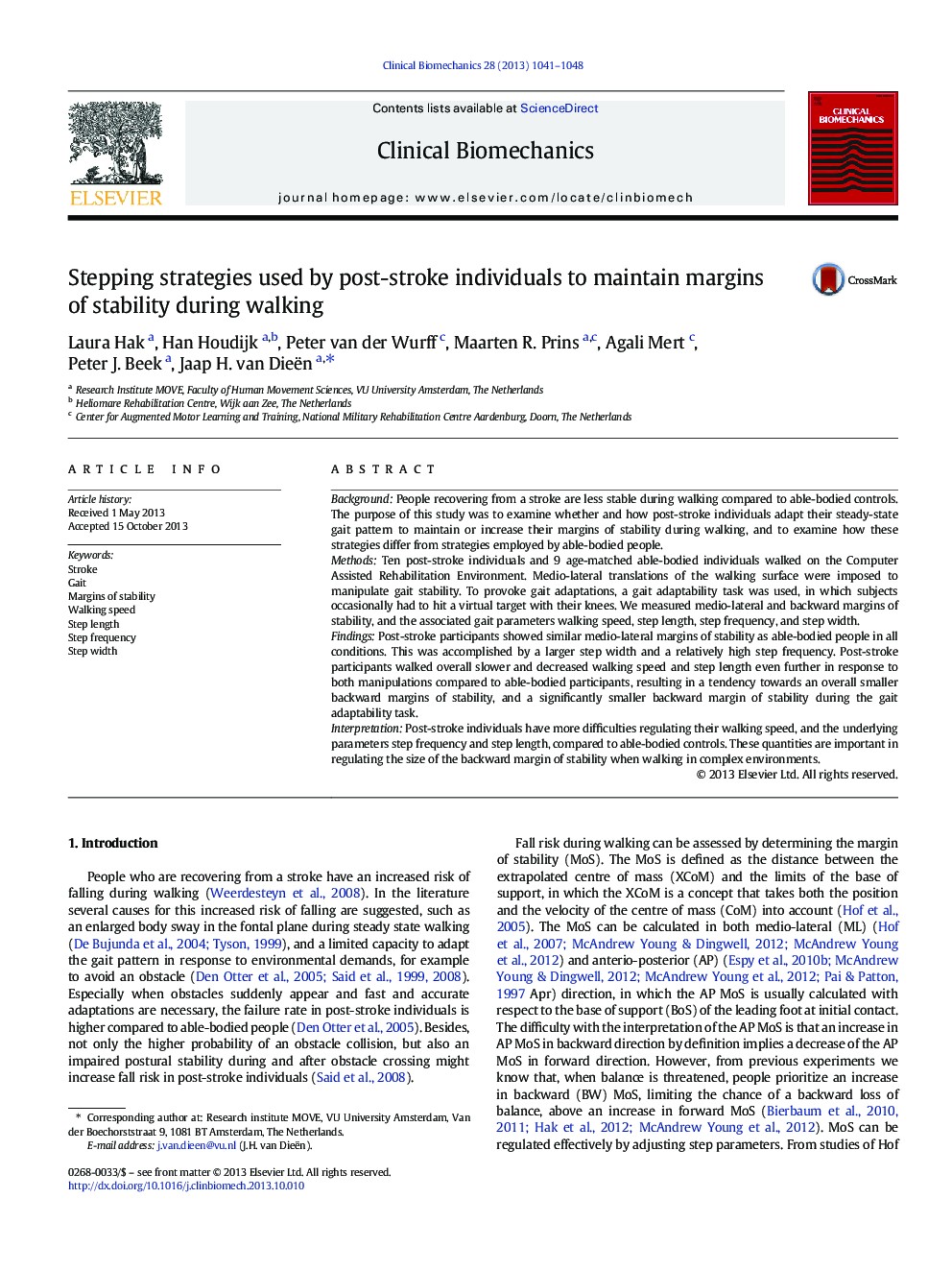| کد مقاله | کد نشریه | سال انتشار | مقاله انگلیسی | نسخه تمام متن |
|---|---|---|---|---|
| 6204827 | 1603749 | 2013 | 8 صفحه PDF | دانلود رایگان |
BackgroundPeople recovering from a stroke are less stable during walking compared to able-bodied controls. The purpose of this study was to examine whether and how post-stroke individuals adapt their steady-state gait pattern to maintain or increase their margins of stability during walking, and to examine how these strategies differ from strategies employed by able-bodied people.MethodsTen post-stroke individuals and 9 age-matched able-bodied individuals walked on the Computer Assisted Rehabilitation Environment. Medio-lateral translations of the walking surface were imposed to manipulate gait stability. To provoke gait adaptations, a gait adaptability task was used, in which subjects occasionally had to hit a virtual target with their knees. We measured medio-lateral and backward margins of stability, and the associated gait parameters walking speed, step length, step frequency, and step width.FindingsPost-stroke participants showed similar medio-lateral margins of stability as able-bodied people in all conditions. This was accomplished by a larger step width and a relatively high step frequency. Post-stroke participants walked overall slower and decreased walking speed and step length even further in response to both manipulations compared to able-bodied participants, resulting in a tendency towards an overall smaller backward margins of stability, and a significantly smaller backward margin of stability during the gait adaptability task.InterpretationPost-stroke individuals have more difficulties regulating their walking speed, and the underlying parameters step frequency and step length, compared to able-bodied controls. These quantities are important in regulating the size of the backward margin of stability when walking in complex environments.
Journal: Clinical Biomechanics - Volume 28, Issues 9â10, NovemberâDecember 2013, Pages 1041-1048
